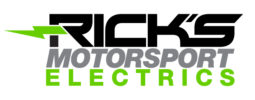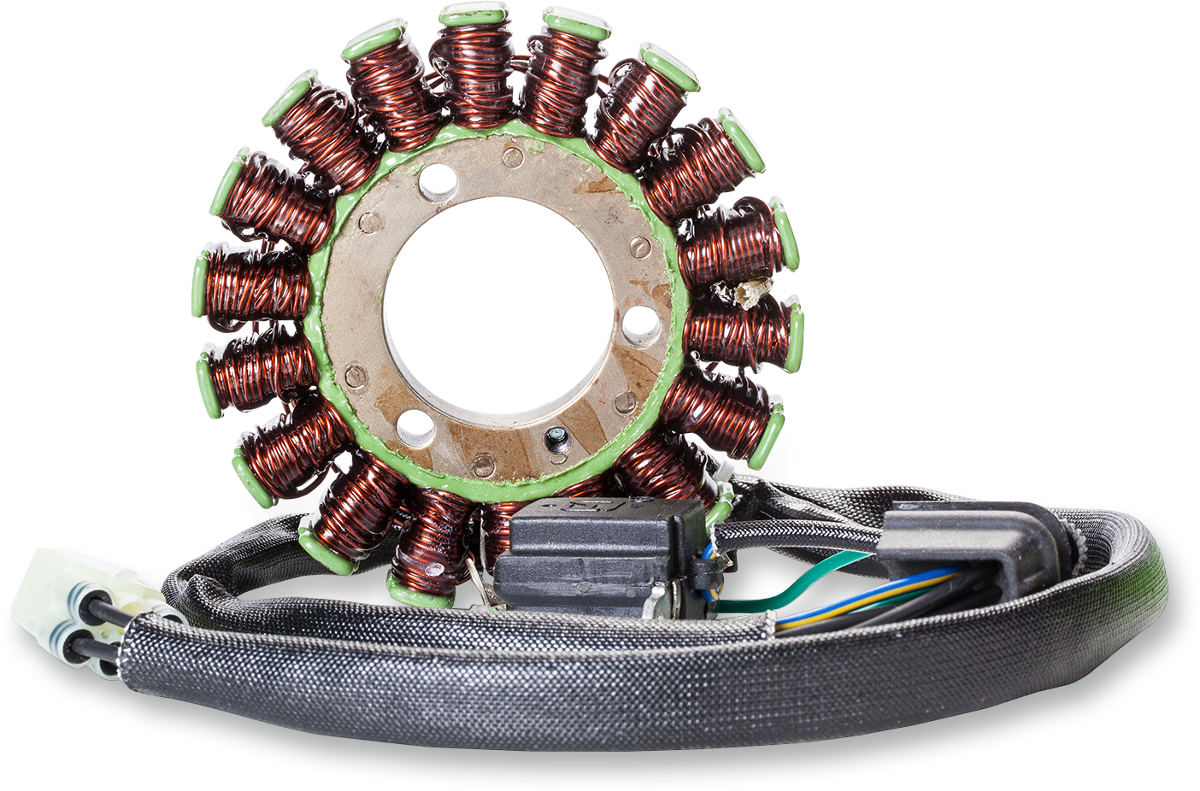What is a stator, and how does it work?
If you’re not sure what a stator is or how to maintain it, you’re not alone. Many motorcyclists and motorsport enthusiasts ignore their entire electrical and charging systems until they malfunction. Today’s technology-driven parts are generally reliable and long-lasting, so it’s often better not to mess with them anyway unless there’s a reason. However, it’s critical to understand the components that comprise the charging system so that you know what to look for, what to test, and what you’ll need replaced should your machine start to malfunction.
Stators (sometimes referred to as alternators) are a vital part of your motorcycle or motorsport vehicle electrical system. Within the world of stators, there are permanent magnet systems and field excited stators. The difference between these two systems boils down to the use of permanent magnets in one system and an electromagnetic field in the other system, respectively. Permanent magnet systems are far more popular choices for new and modern vehicles.
Stators are an essential component to generate the electricity that powers the electrical loads of your vehicle. A permanent magnet stator is a stationary piece of circular metal with prongs that have lengths of copper wires wrapped around them, which are then connected into either a “wye” or “delta” pattern. The coils produce electricity as magnets on the rotor, or the flywheel, move around the stator. The number of prongs on the stator and the magnets in the flywheel must be created to match one another,. The stator produces alternating current (AC) that flows into your machine’s rectifier to be converted to direct current (DC) and then power the DC loads on your bike.
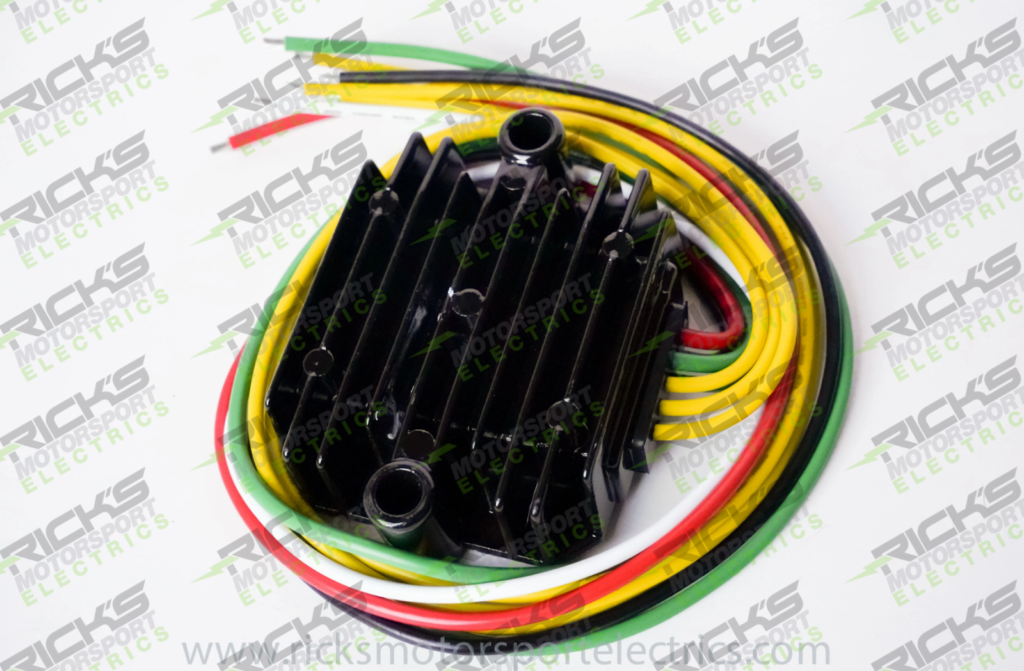
Field excited stators are similar to permanent magnetic systems, except they operate with an electromagnet instead of permanent magnets. Electromagnets are only magnetized when in use and result in variable strength, which impacts the battery charge. In this system, the voltage regulator controls the strength of the electromagnet, and the rectifier converts the stator’s AC output to DC for the vehicle.
Stators can be found in many configurations, with single-phase and three-phase being most common, though some (especially on older vehicles) may have separate windings for multiple systems. Most high-power vehicles – motorcycles, ATVs, and other modern-day motorsport machines – require a three-phase stator. We’ll talk about how to test the three-phase stator system on your machine below.
What is the difference between a stator and an alternator?
Stators and alternators are sometimes used almost interchangeably by mistake. However, they do not refer to the same components on your machine. An alternator refers to a complete AC generator (on modern vehicles almost always contained in a single unit), which contains four main parts; your stator, rotor, rectifier, and regulator. Your stator is simply one of the four main parts of your alternator.
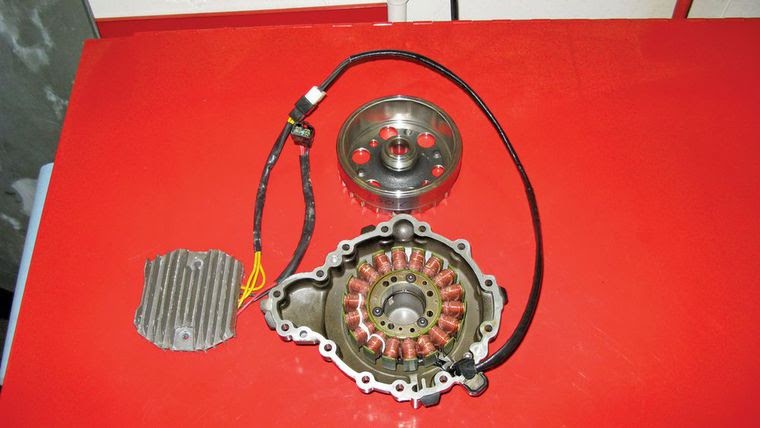
Older motorcycles were not equipped with the lights, turn signals, electric starters, and high-tech features that they are now. The demand for more technology and greater convenience on motorcycles and motorsport vehicles instigated a shift from the DC generator (used up until the 1960s and 1970s) to the AC generator or alternator. The alternator refers to the system that generates electricity, converts it from AC to DC power, and controls the output to the appropriate level for the vehicle’s DC loads.
If you’re a fan of vintage motorcycles or ride an older machine, you’ll hear the term “magneto” instead of generator, alternator, or stator. Early motorcycles relied on this simple system to create a spark of electricity which powered the minimal electric features of older bikes. A magneto is limited in its ability to power a motorcycle and was abandoned quickly as the demand for electricity-fueled features increased.
Here’s how to test a stator:
It’s often pretty obvious when you need to test or service your stator because its breakdown results in charging issues that result in issues like poor ignition performance, dim and/or flickering lights, and ultimately the bike being unable to start. If the bike hasn’t been charging, at this point you need to test the charging system components. There are two kinds of stator tests: static and dynamic.
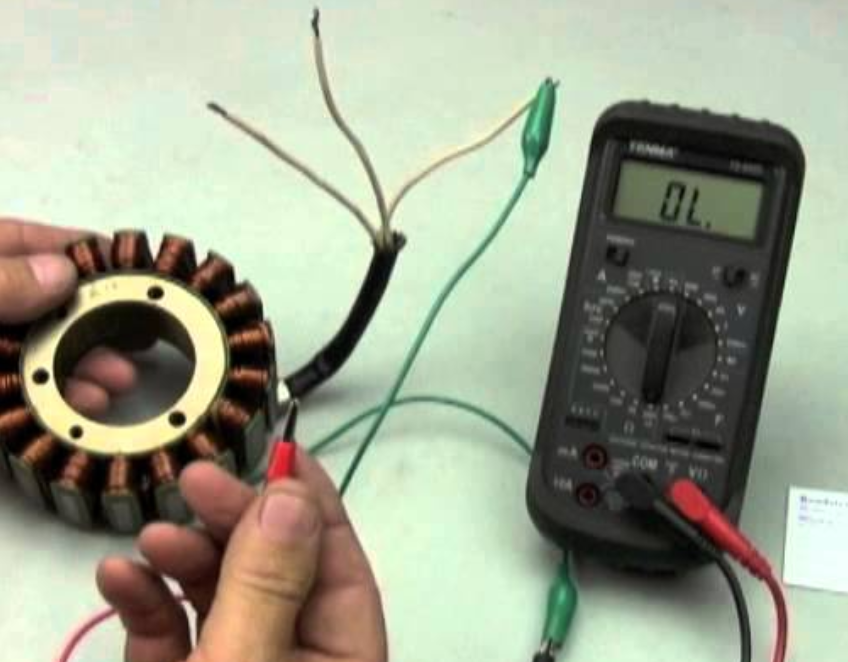
Both dynamic and static tests measure from coil to coil (phase to phase) and a static test also measures to ground. The static tests measure the resistance of the stator (in ohms) while the dynamic test measures in volts. The correct readings vary depending on year/make/model and can be found in your service manual.
Dynamic stator tests require your machine to be running, while static tests do not. In fact, static stator tests don’t even need the stator to be attached to the vehicle. We recommend doing a dynamic test if at all possible, but static stator tests are often the only option since so many damaged or worn out stators result in a bike that won’t start. Dynamic and static tests measure the stator differently and yield different results.
You’ll need a multimeter device to do these tests. You can purchase one from your local hardware store relatively cheap (make sure you read the manual that comes with it so you’re testing accurately!).
To perform a static test on your motorcycle or motorsport vehicle stator:
- Ensure that your multimeter device is set to ohms and that you know your stator’s target readings. Pull the negative and positive leads apart and check that the multimeter display reads OL for an open loop. Then, touch the two leads together and make sure that the multimeter reads 0 for a closed loop.
- Label your stator’s output lines 1,2, and 3 (order does not matter). Connect the multimeter leads in phase 1 and phase 2 and wait for the reading to stabilize. Record your result. Repeat for phases 2 and 3 and check your reading. Lastly, measure from phases 1 and 3 and check your reading. Your results should sit comfortably in the range dictated by your stator and its manufacturer. Finally, check to make sure that none of the three have continuity to ground (if it’s on the bike use the engine case, if it’s not use the metal core of the stator).
Keep in mind that the smaller your stator range is, the trickier it can be to test.
To perform a dynamic test on your stator:
Change the multimeter setting to AC volts, and start the machine up. Once again, measure between phases 1 and 2, 2 and 3, and 1 and 3. Take your readings and check them in relation to your target readings, which should be listed in your service manual. Make sure you’re taking the readings at the appropriate RPM listed.
If you’re unsure of your test results or do not have the right equipment, bring your motorsport vehicle to a professional. We also offer in house testing on our custom built dyno machine so you can send your individual components to us for a minimal testing fee.
When should you replace a stator?
Stators, due to the thinness of the copper wires and constant heat generation of the electricity, are prone to wearing out. You’ll find that they need to be replaced throughout your machine’s lifespan.
Some motorcyclists and motorsport enthusiasts ask us about replacing the stator preemptively to avoid an inconvenient breakdown while on the road. Generally speaking, you don’t need to replace a stator if your motorcycle or motorsport machine is still running smoothly. Stators have unpredictable lifespans, and the timing of replacements isn’t always dependent on the stator’s age, so there’s no reason to replace one that may very well run for several thousand more miles if left untouched.
Performing a diagnostic test is the best way to know whether you need to replace your stator. You can consult your service manual for testing procedures and testing values. We also have testing videos on our Youtube Page that walk you through how to test a stator and common errors when testing stators.
Custom stators by Rick’s Motorsport Electrics
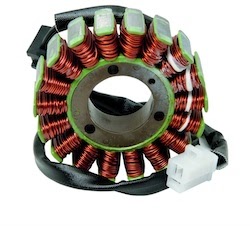 If you’re having issues with your stator, give us a call. Rick’s Motorsport Electrics provides custom stators for every kind of motorsport vehicle. Since the 1970s, we have developed and sourced our aftermarket motorsport parts and components, and created tailored specialty solutions for every one of our customers in-house. For those parts we do not make brand new, we have an entire custom rebuilding department in house.
If you’re having issues with your stator, give us a call. Rick’s Motorsport Electrics provides custom stators for every kind of motorsport vehicle. Since the 1970s, we have developed and sourced our aftermarket motorsport parts and components, and created tailored specialty solutions for every one of our customers in-house. For those parts we do not make brand new, we have an entire custom rebuilding department in house.
In other words, we’re a small business doing big things in the motorsport industry. Rick’s Motorsport Electric is committed to helping our customers understand, maintain, and fix their motorsport vehicles with the highest quality electrical products, parts, and services – all at an affordable price.
We’re on a mission to make the most complex and critical parts of your motorcycle, ATV/off-road machine, snowmobile, or watercraft the easiest and most stress-free components to maintain. Instead of specializing in one type of vehicle, we center our services in providing the highest quality electrical care for all motorsport vehicles. We stock high-demand charging and starting systems and components for the entire motorsport industry.
After decades in the industry, we understand the pitfalls of relying exclusively on original equipment. Our products and in-house rebuild services are an innovative and more cost-effective alternative to traditional OE solutions.
Our New Hampshire-based team brings years of passion and specialized expertise to the table. We pride ourselves on our ability to design and build electrical solutions for even the most obscure models and machines, price our products and services reasonably, and stay on top of industry trends. In fact, we offer a one-year replacement warranty on nearly all motorsport parts. We’ve seen it all, and there’s not one machine we haven’t fixed or fine-tuned.
If you have issues, questions, or concerns about your motorsport vehicle, give us a call or text us at (603) 329-9901 or email us at Info@RicksMotorsportElectrics.com.
